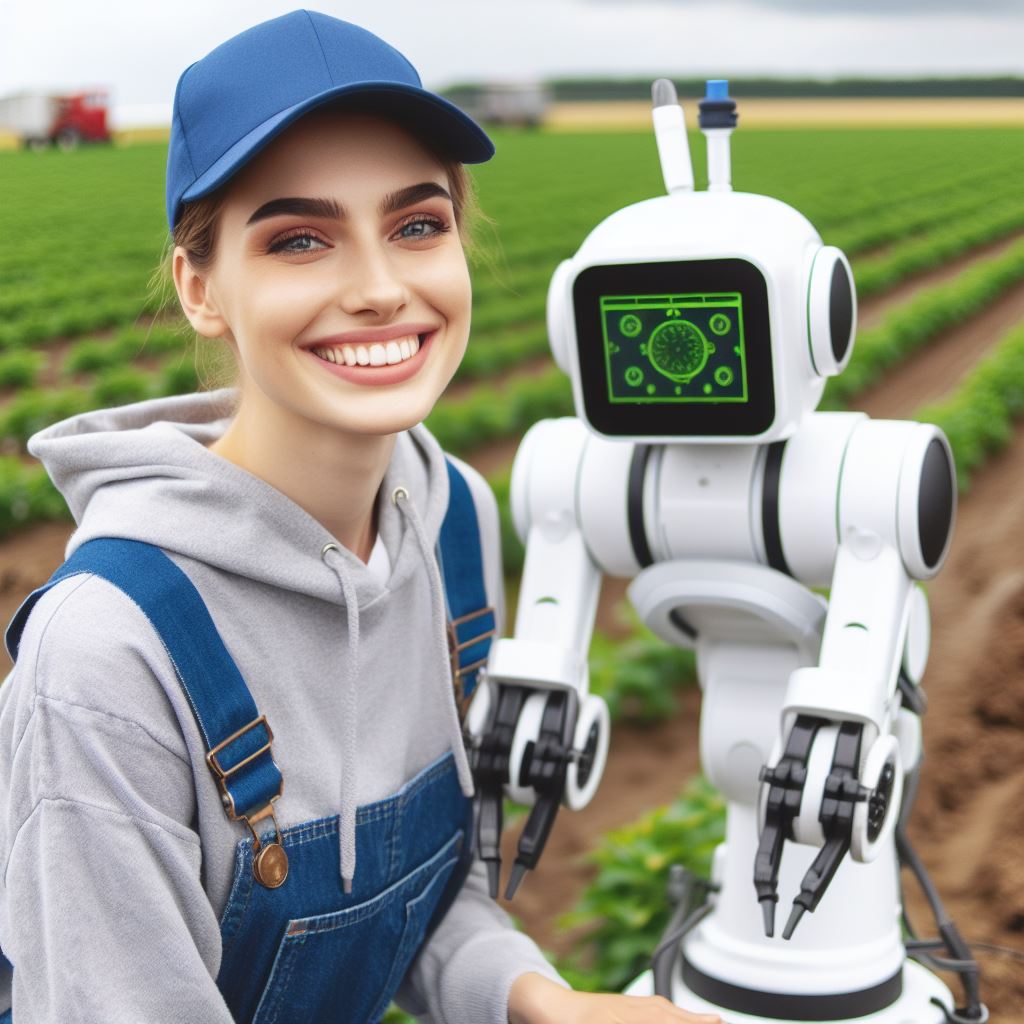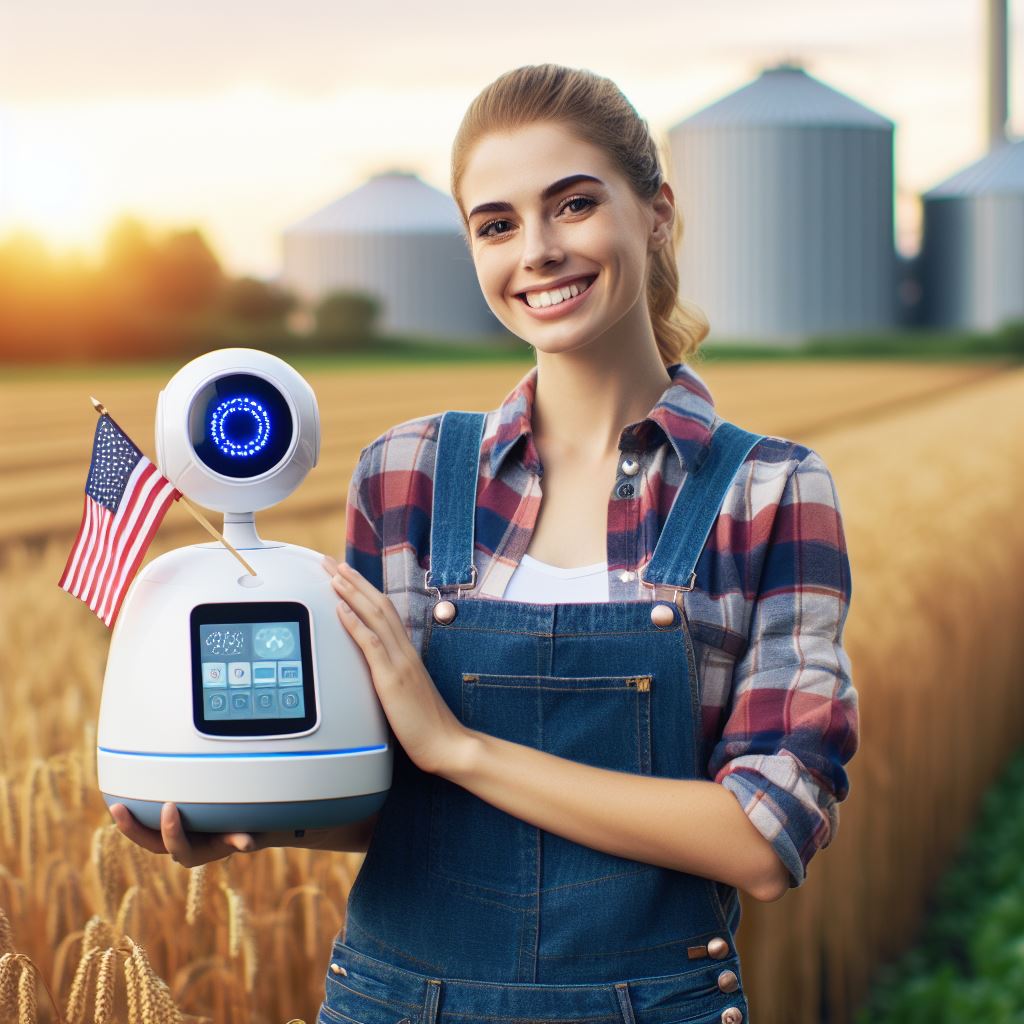Introduction
Agriculture has come a long way with the advent of automated harvesters, revolutionizing modern farming.
Automated harvesters refer to machines designed to perform harvesting tasks without human intervention.
The importance of automation in modern agriculture cannot be overstated.
It enables farmers to increase productivity, reduce costs, and optimize efficiency.
The use of automated harvesters has become essential in meeting the growing demand for food worldwide.
In this post, we will explore the benefits and potential of automated harvesters in depth.
By embracing this technology, farmers can achieve higher yields, improve crop quality, and save valuable time and labor.
Let’s delve into the advantages of automated harvesters and discover how they are shaping the future of farming.
Development of Automated Harvesters
Historical background and evolution of harvesters
- Harvesters have evolved significantly over the years to meet the demands of agriculture.
- In the 19th century, reaper-binders were introduced, which combined cutting and binding functionalities.
- The 20th century saw the emergence of self-propelled combine harvesters, revolutionizing farming practices.
- These advancements in harvesters allowed for increased efficiency and productivity in the agricultural sector.
Introduction of automation in farming machinery
Automation has transformed the way farming machinery operates, particularly with the development of automated harvesters.
The historical background and evolution of harvesters demonstrate the continuous advancements made to meet the growing demands of the agricultural sector.
The introduction of automation in farming machinery marked a significant shift in farming practices, allowing for increased efficiency and reduced manual labor.
Advancements and innovations leading to automated harvesters
Advancements and innovations have played a crucial role in the development of automated harvesters.
For instance, GPS-guided navigation systems have revolutionized the way harvesters traverse fields, ensuring precision and minimizing crop damage.
Sensing technologies, like LiDAR and cameras, enable harvesters to detect and avoid obstacles efficiently.
Machine learning algorithms further enhance the efficiency and performance of automated harvesters.
Examples of successful implementation and usage
Successful implementation and usage of automated harvesters are evident in industry-leading companies like John Deere and Case IH.
Their advanced automation features and fully autonomous concept vehicles portray the potential and effectiveness of automated harvesters.
Moreover, universities and research institutions have also contributed to the development of specialized automated harvesters for specific crops, further driving progress in the field.
Automated harvesters are the future of farming, offering improved efficiency, reduced labor requirements, and enhanced precision.
As technology continues to advance, we can expect further innovations in automated harvesters, ensuring sustainable and productive agriculture for years to come.
Read: AI in Farms: Precision Agriculture’s Rise
Benefits of Automated Harvesters
Increased efficiency and productivity
Automated harvesters bring numerous benefits to the farming industry, revolutionizing traditional harvesting practices.
The increased efficiency and productivity they offer are unparalleled.
By working continuously and swiftly, automated harvesters expedite the harvesting process.
They can handle labor-intensive tasks efficiently, reducing overall harvesting time and increasing productivity levels.
Cost reduction and labor-saving implications
Moreover, the adoption of automated harvesters results in substantial cost reduction and labor-saving implications for farmers.
By eliminating the need for manual labor, significant cost savings can be achieved.
The allocation of labor resources to other vital farm operations becomes feasible.
Automation reduces the dependency on seasonal labor, avoiding additional expenditures on hiring and training.
Improved accuracy in crop harvesting
Accuracy plays a crucial role in crop harvesting, and automated systems excel in this aspect.
Equipped with advanced sensors and algorithms, these harvesters precisely identify and collect ripe crops.
This accuracy leads to improved overall crop quality, as unripe or damaged crops are reliably avoided.
Precision farming techniques further optimize yield, ensuring the harvest of appropriate crops.
Consistent quality maintains customer satisfaction and meets market demands.
Minimization of crop damage and waste
Perhaps one of the most critical advantages of automated harvesters is their ability to minimize crop damage and waste.
Delicate handling techniques are programmed to reduce damage during harvesting, which can occur due to human errors.
By minimizing crop waste, automated systems promote sustainable farming practices and reduce unnecessary losses.
Timely and accurate cutting techniques prevent excessive trimming, minimizing crop losses and maintaining produce quality.
Flexibility and adaptability to different farming environments
Additionally, automated harvesters exhibit flexibility and adaptability to different farming environments.
Farmers can easily program these systems to handle various crop types and adjust to specific farming conditions.
These harvesters are designed to navigate challenging terrains, ensuring complete coverage of the cultivated area.
Adjustable settings enable customization of harvesting methods according to crop requirements.
Moreover, they can operate in diverse weather conditions, allowing year-round harvesting and improving overall crop yield.
In essence, the benefits of automated harvesters are abundant and transformative.
They enhance productivity and efficiency, reduce costs, improve accuracy, minimize crop damage and waste, and offer flexibility in different farming environments.
As the agriculture industry continues to evolve, the adoption of automated harvesters becomes crucial in ensuring sustainable and prosperous farming practices.
Read: Automated Shepherding: The New Age
Transform Your Agribusiness
Unlock your farm's potential with expert advice tailored to your needs. Get actionable steps that drive real results.
Get Started
Challenges and Limitations
Initial investment and affordability concerns
One of the primary challenges in adopting automated harvesters is the initial investment required to purchase these advanced machines.
Farmers may struggle to afford the high costs associated with purchasing, maintaining, and upgrading these technologies.
Compatibility with diverse crops and farm sizes
Automated harvesters often face limitations in their compatibility with different types of crops and varying sizes of farms.
Some machines may be highly effective with one crop but less efficient or incapable of harvesting others.
Dependence on technology and potential risks
Farmers who rely on automated harvesters are susceptible to potential risks associated with technology.
Malfunctions or breakdowns of these machines could disrupt the entire harvesting process and lead to significant losses if not addressed promptly.
Training and skill requirements for operation and maintenance
The operation and maintenance of automated harvesters require specialized training and skills.
Farmers need to invest time and resources in acquiring the necessary expertise to operate and maintain these complex machines.
Potential impact on employment and job market
With the adoption of automated harvesters, there is a concern regarding the potential impact on employment in the farming sector.
These technologies have the potential to displace human labor, leading to job losses and changes in the job market.
Therefore, while automated harvesters offer numerous benefits, there are several challenges and limitations that need to be addressed for their widespread adoption.
The affordability of these machines, their compatibility with diverse crops, and the risks associated with dependence on technology are important considerations for farmers.
In addition, the training and skill requirements for operating and maintaining automated harvesters should not be overlooked, and the potential impact on employment and the job market should be carefully evaluated.
By addressing these challenges, the future of farming can embrace the potential benefits of automated harvesters while minimizing the potential drawbacks.
Read: Crop Monitoring: Tech for Better Yield
Future Implications and Advancements
Integration of Artificial Intelligence (AI)
The integration of AI in automated harvesters will revolutionize farming practices.
By using AI, harvesters can make real-time decisions based on gathered data.
AI algorithms can analyze crop conditions, weather patterns, and pest threats for optimized harvesting.
Automated harvesters with AI capabilities will increase efficiency and yield, leading to higher profits for farmers.
Investment in AI research and development will pave the way for even more advanced automated harvesters in the future.
Potential for data-driven decision-making in farming
Automated harvesters have the potential to provide farmers with detailed, data-driven decision-making.
Through the collection and analysis of data, farmers can make informed choices for improved productivity.
Data on crop health, soil conditions, and yield projections will guide farmers in optimizing their resources.
By embracing data-driven decision-making, farmers can minimize risks and maximize their harvest outcomes.
The integration of automated harvesters with data analytics will empower farmers to make smarter choices.
Advancements in sensor technology and machine learning algorithms
Sensor technology is rapidly advancing, and automated harvesters are benefiting from these advancements.
Sensors can measure soil moisture levels, nutrient content, and pest infestation, providing valuable insights.
Improved sensor accuracy and reliability will enhance the overall performance of automated harvesters.
Machine learning algorithms can analyze sensor data to identify trends and patterns for improved efficiency.
Combined with sensor technology, machine learning will lead to further advancements in automated harvesters.
Collaborations and partnerships for future research and development
The future of automated harvesters relies on collaborations and partnerships for research and development.
Stakeholders including farmers, agricultural companies, and tech firms need to work together.
Collaborations will enable the sharing of knowledge, resources, and expertise for innovative advancements.
Partnerships can support funding and investment into research, accelerating the development of automated harvesters.
By fostering collaborations, the farming industry can collectively drive the future of automated harvesting technology.
In general, the future implications and advancements of automated harvesters are promising.
Integration of AI will revolutionize farming practices, enabling real-time decision-making for optimized harvesting.
Data-driven decision-making will empower farmers to maximize productivity and minimize risks.
Advancements in sensor technology and machine learning algorithms will enhance the performance of automated harvesters.
Collaborations and partnerships play a crucial role in driving future research and development.
The future of farming lies in embracing and leveraging these advancements to ensure sustainable and efficient harvests.
Read: E-Health for Cattle: Tech Advancements
Conclusion
Recap of the benefits of automated harvesters
Automated harvesters offer increased efficiency, reduced labor costs, and optimized crop yields for farmers worldwide.
Emphasizing the transformative potential of automation in agriculture
Automation has the power to revolutionize farming, enabling precision, scalability, and sustainability in food production.
Encouragement for farmers to explore and adopt automated harvesters
Farmers are urged to embrace automation for improved productivity, profitability, and environmental stewardship on their farms.
Final thoughts on the importance of embracing innovation in farming
Innovation, like automated harvesters, is essential for ensuring the future viability and resilience of agriculture in an ever-changing world.




